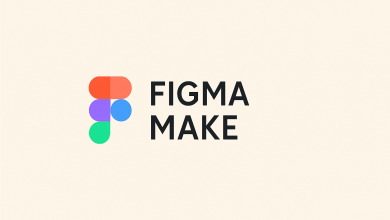
Shifting trade policies, geopolitical friction and cost volatility have pushed procurement teams into the spotlight, transforming what was once a back-office sourcing department into a frontline function for managing risk and uncertainty.
With procurement teams stretched thin and demands for faster decision making and greater cost control, agentic AI is emerging as the new lever to bridge the gap between procurement aspirations and reality. The reality is that too many procurement teams do not have time for critical and important aspects such as building relationships, driving strategic priorities. Too much time and effort is still spent on administrative actions, transactional issues, and tactical items.
With the advancements in agentic flows and autonomous AI agents, everything will change. AI agents can go past automation: they can learn, evolve, execute tasks autonomously and work alongside humans to hyper automate and perhaps more importantly allow teams to do things they don’t have time for. However, many organisations’ procurement and supplier management functions still depend on manual processes and disconnected systems. This can create AI roadblocks because data is what AI survives on.
To move from isolated automation to autonomous decision-making, organisations need a comprehensive AI strategy that sits on a solid data foundation.
When AI fails to connect
Despite widespread buzz, most procurement AI tools are still rudimentary, focused on automating tasks, not delivering outcomes. A recent Ivalua study found that, while 73% of organisations agree on AI’s potential in procurement, adoption is often held back by fragmented deployments. This is typically because many organisations still operate with disconnected systems, siloed data and manual processes. In fact, Ivalua’s study shows that fewer than one-third (32%) of UK businesses have adopted AI in their procurement function over the past year.
These issues will severely limit agents’ ability to make informed decisions. For example, if separate AI agents pull from disparate data sources, they will produce inconsistent results. One agent may rely on legacy ERP data, and another on old supplier communications – which can create major disparities. Which agent has access to the right data? Who is governing the actions of the agents and assessing the quality of output?
If organizations are not careful, a lack of structure and governance in the use of AI agents mixed with siloed and fragmented data could well lead to more harm than good. Agents that lack shared data frameworks and governance context, leads to contradictory outcomes, erodes trust and prevents scaling agentic AI across the procurement function.
In data we (should) trust
Inconsistent and fragmented data sources don’t just limit the value that organisations can tap into using agentic AI. It can result in scenarios where one AI agent flags a supplier as high-risk, due to recent delivery issues, while another greenlights the same supplier for a critical contract. Practically speaking, this fragmentation leads to confusion and delays, but from a legal and financial standpoint, contradictory outputs can even create audit blind spots and increased risk exposure. This is why the concept of “human-in-the-loop” is critical, and organisations should look for the flexibility to insert human decision points wherever they choose, and to opt for transparency around all AI agent activities e.g., agent logs.
That’s why trust remains a big challenge: over half of organisations (52%) say they wouldn’t rely on agentic AI in a crisis. In some ways, this lack of confidence is understandable, as even the most sophisticated AI agents are only as effective as the data and infrastructure supporting them.
In response, organisations need to ensure that the environment they operate – including its data, systems and governance – is structured, integrated and robust. Without connected, accurate and real-time data, agentic AI will operate in a vacuum, isolated from the broader context it needs to make decisions, which can ultimately increase risk rather than reduce it.
Strong data, stronger decisions
When organisations invest in clean, standardised data and unified workflows, agentic AI automates at scale, but also takes action or triggers action. When it comes to data and analytics, AI overall will certainly help procurement teams detect and respond to risks sooner, adjust sourcing strategies dynamically, and stay ahead of market disruptions.
Agents can learn from past decisions and adapt to shifting needs. They have the ability to learn and self improve, making them smarter over time. In this way, AI agents become a truly transformational asset for procurement teams, which can further elevate the function from a transactional cost centre into a driver of resilience. This gives organisations a competitive advantage and gives procurement the opportunity to do what it is best at – building relationships – which is ironically the more human side of procurement.
From agents to allies
Closing the AI gap isn’t just about deploying new technology, it’s about transforming the conditions AI needs to be effective across the supply chain. Agentic AI especially must be embedded within a broader operational shift; one that prioritises connected data, cross-functional visibility and consistent governance.
Only then will organisations be able to anticipate supply disruptions earlier, spend less time resolving data conflicts and act more decisively in balancing cost, compliance and supply continuity. For the best results, this must be done with a human in the loop. That way AI can provide the insights and automated decisions to enhance procurement teams’ productivity, with a human verifying the outputs of any AI tool to ensure their trustworthiness.
Organisations that fail to build this data foundation risk falling behind, being stuck with tools that can’t talk to each other and decisions made without the full picture.





